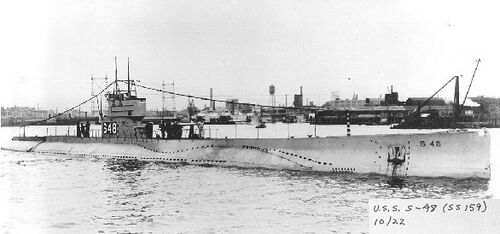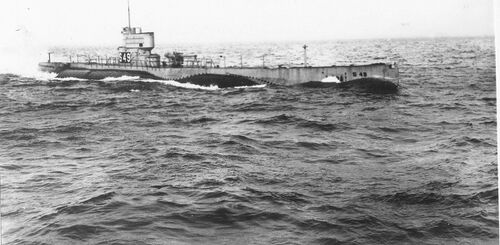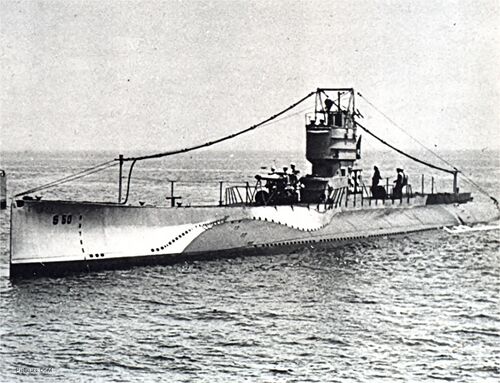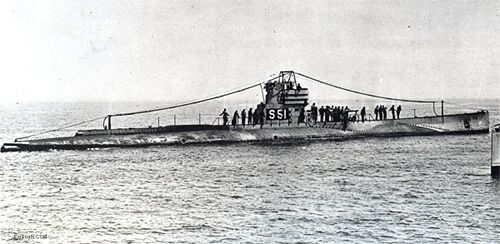S-48 through S-51

Design and Construction Notes
Accordingly, C&R made a major change to the S-48 group by lengthening them nine feet so that a separate watertight aft torpedo room could be incorporated. This also caused a significant redesign of the rudder and stern plane arrangement, a look that presaged the arrangement on the later fleet submarines. Instead of the finely tapering stern that wrapped around the stern tube in the S-10 group, on the S-48 group the "chisel" stern of the S-3 group returned, with the torpedo tube jutting through the middle of the chisel. When seen in drydock, this gave the S-48 group a distinctive stern look. These boats were also powered by a larger 2-cycle version of the Busch-Sulzer diesel engine and had the below water non-retractable bow planes. Displacement increased from the nominal 800 tons surfaced to 903 tons.
Although visually they were the epitome of the 1920's USN submarine design aesthetic, in the end they were not well liked by the Navy. The boats were slow divers with ponderous underwater maneuverability and questionable reliability. S-51 was lost in a tragic accident in 1925 and was subsequently salvaged and scrapped. S-49 and S-50 were decommissioned in 1927 and after suffering battery fires and to keep the Navy in compliance with the London Naval Treaty. S-49 clung to life after being sold to a civilian firm as a tourist exhibit and S-50 was scrapped in 1930. Only S-48 continued to serve. After a grounding in 1925 she was taken in hand to be modified in a scheme to fully modernize the Government S-boats. Her modifications were not repeated on any other Government design S-boat after the costs ballooned to unsustainable levels. However, they were generally successful and S-48 alone of this group served all the way through the end of WWII.S-48 (SS-159)

S-49 (SS-160)

S-50 (SS-161)

S-51 (SS-162)

Page created by:
Ric Hedman & David Johnston
1999 - 2023 - PigBoats.COM©
Mountlake Terrace, WA, Norfolk, VA
webmaster at pigboats dot com